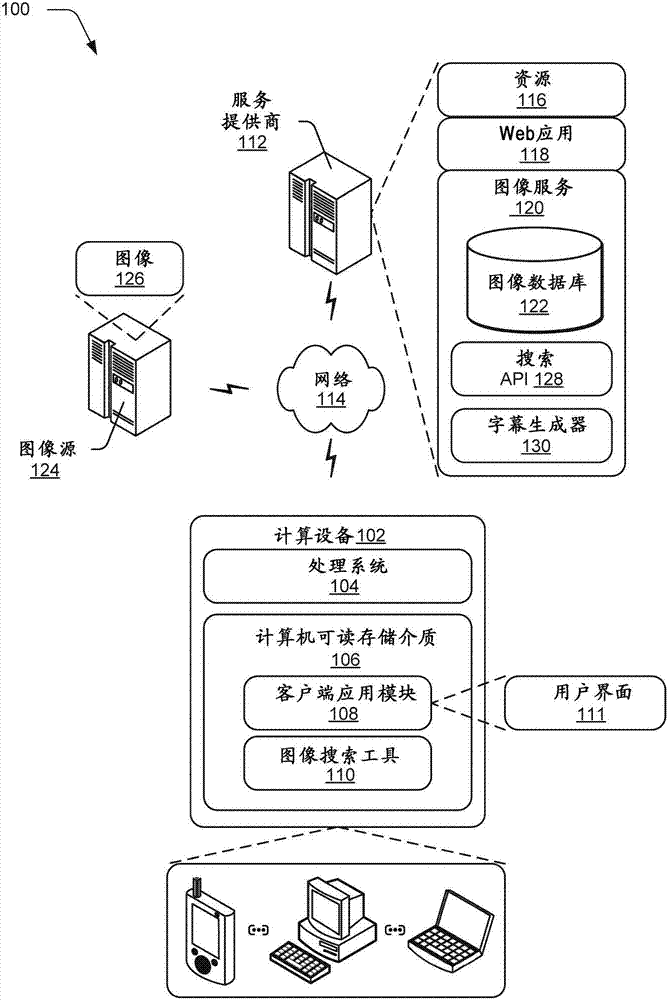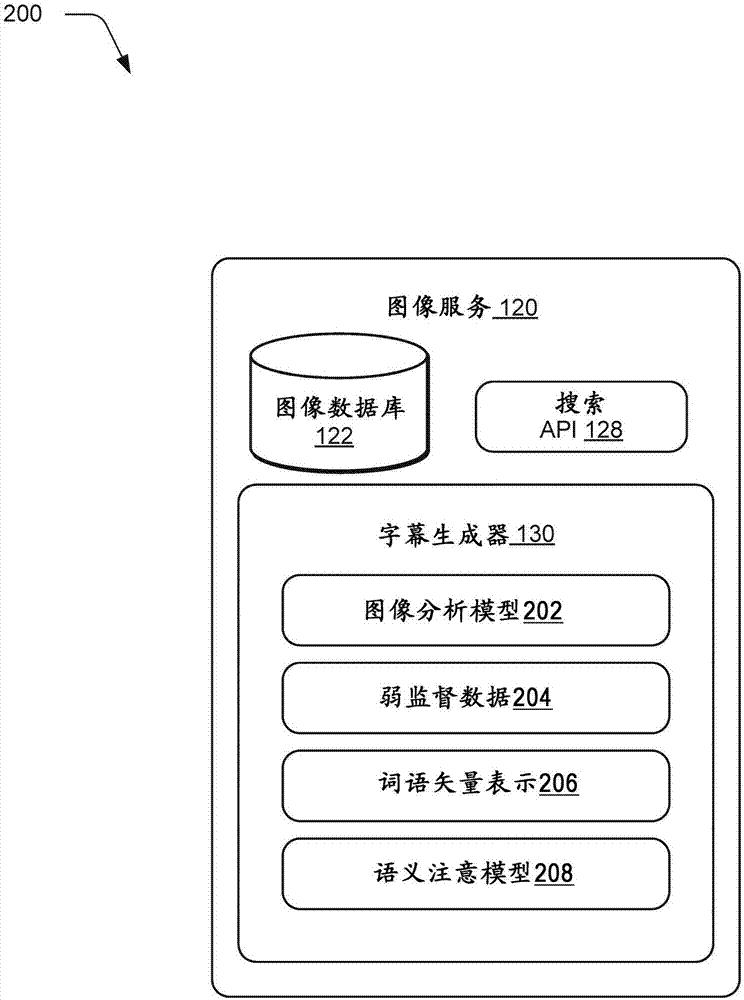Image captioning with weak supervision
A weak supervision and subtitle technology, applied in image communication, still image data retrieval, still image data indexing, etc., can solve problems such as poor work, difficult for users to search for specific images, and neglect of image details
- Summary
- Abstract
- Description
- Claims
- Application Information
AI Technical Summary
Problems solved by technology
Method used
Image
Examples
Embodiment Construction
[0018] overview
[0019] Traditional techniques for image processing do not support high-precision natural language subtitles and image search due to the limitations of traditional image tagging and search algorithms. This is because traditional techniques only associate labels with images, but do not define the relationship between labels or between labels and images themselves. Alternatively, traditional techniques may include using a top-down approach in which the entire "gist" of an image is first taken and refined into appropriate descriptive words and captions through language modeling and sentence generation. However, this top-down approach does not work well in capturing fine details of an image, such as local objects, attributes, and regions that contribute to an accurate description of the image.
[0020] This paper describes techniques for captioning images with weak supervision. In one or more implementations, weakly supervised data about the target image is ac...
PUM
 Login to View More
Login to View More Abstract
Description
Claims
Application Information
 Login to View More
Login to View More - R&D
- Intellectual Property
- Life Sciences
- Materials
- Tech Scout
- Unparalleled Data Quality
- Higher Quality Content
- 60% Fewer Hallucinations
Browse by: Latest US Patents, China's latest patents, Technical Efficacy Thesaurus, Application Domain, Technology Topic, Popular Technical Reports.
© 2025 PatSnap. All rights reserved.Legal|Privacy policy|Modern Slavery Act Transparency Statement|Sitemap|About US| Contact US: help@patsnap.com



